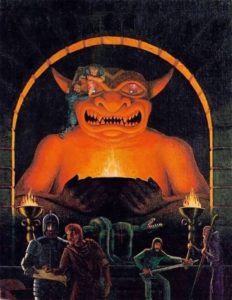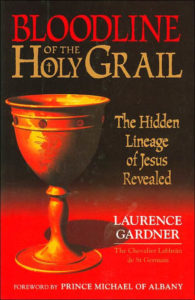
Player’s Handbook
Blogging suffered a cruel downturn this past decade, all but displaced by social media feeds and their 280-characters-or-less bumper stickers. That’s why I hold today’s bloggers in such high regard, particularly hobbyists and amateurs not drawing a steady income off their hard work.
One blogger I’ve followed through the downturn is noisms over at Monsters and Manuals, a site dedicated to Dungeons & Dragons and other role-playing games. I’ve been meaning to write this for a couple of years now but kept putting it off. Now is the time. His twelve-year-old blog celebrated its 1,500th post last August and he’s still cranking out entries. That’s impressive. Kudos.
(I haven’t played D&D since the late 1980s. How I discovered Monsters and Manuals will have to be the subject of another post.)
Much of my admiration for noisms is simply the dedication required in producing posts regularly for over a decade. He’s also done well to stay on topic (so many blogs wander off their chosen path to spout politics or shill product) without feeling straitjacketed to a single subject.
More than these reasons, I discovered in Monsters and Manuals a blogger with a fine-tuned radar for exploring creativity.
I recently picked up a collection of Orwell’s critical essays and was sucked in by his discursive writing style. Orwell seamlessly moves from one topic to another without ever losing sight of the essay’s primary focus. Reading Orwell dissect Dickens’ and Kipling’s politics is following a busy bee through a lush garden of orchids and varietals. There’s a similar dynamic at Monsters and Manuals. noisms draws from philosophy, linguistics, history, British culture, and more, all in the service of exploring what makes role-playing different from—and perhaps better than—other narrative forms.
Photographs of odd entryways as starting points for dungeon adventures. British gardens as inspiration for a fantasy setting. Thoughts on the “ontological flicker” of postmodern critical theory. Actual D&D as Marxist praxis. And a defense of violence, at least, a highly-qualified one. It’s a rich stew.
Even in this hundred-word post on Super Mario Bros. as absurdist art, noisms drops something fairly profound for anyone writing a novel, play, or film script to consider:
In creating a long-lasting, interesting and innovative fantasy setting, then, I think the most important thing may well simply be to come up with, say, a dozen or so ideas, themes or tropes and make sure they appear consistently. What those ideas, themes or tropes are is probably of secondary importance to their repetitive use.
I would say that applies to all manner of story, not merely fantasy settings. All great work has an internal logic. Even if we don’t share its values, the pleasure is experiencing, even living within, that internal logic for a short period of time. (“A book is a pocket or portable dreamweaver.”) Repetition of themes or tropes reinforces the internal logic of a character, or an ethic, or a condition, or a world.
Or this, the profession of beekeeping as a creative constraint:
The point is simply this: once constraints are set in place, creativity starts to flourish. Envisage human creativity like water: without barriers it floods endlessly in a very thin and ever-spreading sheen. With constraint it bursts upwards like a fountain.
The best proof I can offer of Monsters and Manual’s wide peripheral vision is a role-playing game noisms developed called Behind Gently Smiling Jaws. Its premise: The player characters are exploring the dream-memories of an ancient crocodile asleep in a lake:
In its mind are memories of such antiquity that all trace of them have faded elsewhere in the world. Beasts long extinct whose bones are now dust. Spirits whose substance have gradually tattered and frayed down the eons until nothing remains. Civilizations which have risen and fallen and whose ruins are no longer even part of distant legend. Lands which have sunk beneath seas so deep that not even the kraken have seen them. The crocodile witnessed it all and those memories live inside it still.
As a setting for a game world, is it successful? I have no idea. But it’s so strange, so ambitious, so weird, I can only admire the effort.
A more down-to-earth effort is his game There is Therefore a Strange Land:
[The players] might be dilettantes, scholars, satanists, priests, or alchemists. One of them inherits the study of a dead uncle or aunt who was clearly Up To Something. In this study is a portal, or portals, which lead to another World or Worlds…the existence of the other Worlds is also known by others, who will want to buy whatever the [players] can bring back, kill them as rivals, and so on…Picture a group of scholars from Regency-era London going to Athas and bringing back a cannibal halfling to sell to the Prince of Brunswick, all the while trying to avoid being noticed by their rivals, thieves, or high society.
What I love about this premise is how the off-world adventuring is not the only meat of the game. It’s also returning to 19th-century London with bizarre artifacts, finding a fence to move them, dealing with robbers and toughs, and navigating the powdered wigs jockeying for position around the Crown. Although set pre-Victorian, I can’t help but visualize the game as the formalism of H. G. Wells meets the street life of Dickens with The King in Yellow thrown in for measure—I don’t know if I want to play that game, but I would certainly like to read that book.
What I see in Monsters and Manuals is a writer who remains wide open to inspiration from traditional and nontraditional sources. I’ve discussed inspiration before, but I’ve neglected writing how to develop an internal “lightning rod” for inspiration: Maintaining an inquisitive mind that stirs loose subconscious, even primal, thoughts to the surface; not rejecting those ideas out-of-hand because they’re silly or or absurd or embarrassing or transgressive; and most importantly, recording everything for later.
It’s apparent to me noisms has developed a lightning rod for role-playing games—his creative mulch is music, countryside walks, philosophical treatises, news clippings, and more. Any writer would do well to do likewise.

